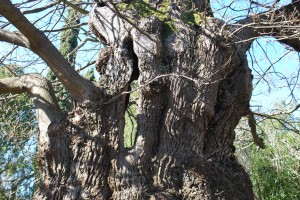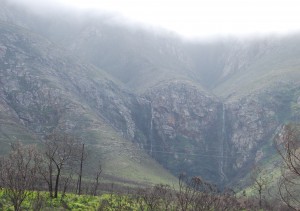CHAPTER < SEVEN – THE GREEN LUNGS OF THE EARTH
“God has cared for these trees, saved them from drought, disease, avalanches, and a thousand straining, levelling tempests and floods; but he cannot save them from fools…….” Nineteenth Century Conservationist John Muir
 Just like the heaving, temperamental surface of the ocean, the forests of the Earth are its lungs, taking carbon dioxide out of the atmosphere and breathing oxygen into the air in a life-giving cycle: oxygen that is vital for the 20 000 litres of fresh, clean air that is needed every day by every person on Earth.
Just like the heaving, temperamental surface of the ocean, the forests of the Earth are its lungs, taking carbon dioxide out of the atmosphere and breathing oxygen into the air in a life-giving cycle: oxygen that is vital for the 20 000 litres of fresh, clean air that is needed every day by every person on Earth.
Unfortunately, however, just like in the ocean, atmospheric pollution levels are continuing to rise all over the world, especially in the Northern Hemisphere where the ideal of clean oxygen-rich air to breathe is in many cities becoming a far-off dream. On a hot, smoggy day in Los Angeles for instance, where millions of vehicles ply the city’s roads and freeways belching out exhaust fumes, the air becomes like “battery acid”, heartbreakingly noxious and difficult to breathe. Every day, every person in this city and many other cities around the Northern world are breathing in this atmospheric poison, taking a multitude of pollutants into their lungs along with the oxygen needed to keep them alive. The net results for many are asthma, allergies and other disease states. But the human population is not the only one at risk.
Photographs of the Camels Hump Mountain in Vermont, United States, taken 20 years apart clearly show the result of pollution. In 1963 when photographs were first taken, the forest covering the mountain was thick with healthy, green growth. Twenty years later in 1983 photographs of the same forest showed tracts of diseased and dying trees; sad, naked victims of acid rain. But this forest is not unique. In the Northern Hemisphere where high-sulphur coal burning is a major source of energy, sulphur dioxide in the flue-gas of power stations being the main cause of acid rain, vast tracts of coniferous and temperate deciduous forests are in dire distress from acid precipitation. In the Southern Hemisphere the problem is similar and yet different.
In a city like Johannesburg, South Africa, which is both a First and a Third World city, atmospheric pollution sometimes builds to the point where it becomes a noxious, gaseous soup, thick and visible to the naked eye. This is especially evident during wintertime when the air is still and unmoved by cleansing winds. Seen from above ground level, on some days the pollution is so thick that little can be seen of the city below. And from the street level looking up, the sky seems no longer blue but a dirty, indiscriminate, brownish colour.
 To blame for this gaseous pall are industrial emissions and exhaust fumes. But much of Southern Hemispheric pollution relates to the fact that worldwide one-and-a-half billion people depend on firewood for fuel, with most of them living south of the Equator. By burning firewood, oxygen is consumed and smoke and carbon dioxide are released into the atmosphere. Also the important carbon dioxide fixing capacity of the chopped-down trees is lost. This is a double negative in terms of carbon dioxide and general pollution level build-up in Southern Hemisphere cities. However for the people living in the tropics and lower latitudes there are few alternatives to this traditional energy source and so the practice of burning wood for fuel continues.
To blame for this gaseous pall are industrial emissions and exhaust fumes. But much of Southern Hemispheric pollution relates to the fact that worldwide one-and-a-half billion people depend on firewood for fuel, with most of them living south of the Equator. By burning firewood, oxygen is consumed and smoke and carbon dioxide are released into the atmosphere. Also the important carbon dioxide fixing capacity of the chopped-down trees is lost. This is a double negative in terms of carbon dioxide and general pollution level build-up in Southern Hemisphere cities. However for the people living in the tropics and lower latitudes there are few alternatives to this traditional energy source and so the practice of burning wood for fuel continues.
The Value of Global Forests
The forests of the Earth are of inestimable value to a sustainable future for us all. They are vast green carbon sinks, which regulate atmospheric chemical compositions and constantly renew the air that we breathe. They also regulate water cycles. Almost all of the water that reaches the atmosphere over land-locked areas comes from trees and plants through transpiration. Just one rainforest tree pumps millions of litres of moisture from the soil to the air during its lifetime.
At ground level, by absorbing rainwater and releasing it into streams and rivulets by a gradual process wholesale flooding is prevented, and the availability of water is extended during the hot, dry months when it is most needed by thirsty forest inhabitants; human, animal, amphibian, fish, insect and plant alike.
 Forests also regulate nutrient cycles. All organisms require elements such as carbon, hydrogen, oxygen, nitrogen, phosphorus, iron, magnesium, potassium, sulphur and other elements to sustain life. Tropical rainforests and temperate forest vegetation are no exception. Most nutrients in a rainforest ecosystem tend to be locked-up in the vegetation rather than the soil, which retains few nutrients. Nutrients come into the forest community from stream water, weathered rock, soil, human and animal activity; as well as dispersal by wind, rain, snow and fog, and once into the community, plants, animals, water, soil and the roots of other plants circulate them.
Forests also regulate nutrient cycles. All organisms require elements such as carbon, hydrogen, oxygen, nitrogen, phosphorus, iron, magnesium, potassium, sulphur and other elements to sustain life. Tropical rainforests and temperate forest vegetation are no exception. Most nutrients in a rainforest ecosystem tend to be locked-up in the vegetation rather than the soil, which retains few nutrients. Nutrients come into the forest community from stream water, weathered rock, soil, human and animal activity; as well as dispersal by wind, rain, snow and fog, and once into the community, plants, animals, water, soil and the roots of other plants circulate them.
When forests are undisturbed they are very efficient at recycling and retaining nutrients. However, once trees are felled nutrients are lost to the community through water running out of the area in streams and rivulets. Burning of forest biomass also contributes to the loss of nutrients to the ecosystem.
Apart from influencing atmospheric and ground moisture levels as well as nutrient cycles, forests also regulate temperatures and influence climate by the complex interaction of trees, ground, air and water. Like the icy white expanses of the Arctic and Antarctic, naked ground reflects the sun’s incoming rays back into space, absorbing little heat. Dark green forests on the other hand reflect only 10 to 20 per cent of the sunlight that reaches them, which is very significant in terms of weather patterns because the moisture-holding capacity of air increases when it is warmed. Warmed air is also less stable which increases convection currents, the atmospheric circulatory system of the planet which shares out energy and warmth across the continents.
 Indeed without moving air life on the landmasses of the globe would be unendurable, with the tropics being searingly hot and the other latitudes being inhospitably cold. Water on Earth would be largely confined to the ocean, with the continents being great desert expanses except for a narrow belt of temperate vegetation. There would be little weathering of rock, and without erosion, the stripping away of tiny fragments of rock that the wind accomplishes, there would be no soil. There would be no weather to create cloud cover and water vapour with which to govern the amount of incoming solar radiation reaching the Earth. There would be no cleansing of pollution from the atmosphere and people would eventually suffocate under a blanket of waste and greenhouse gasses.
Indeed without moving air life on the landmasses of the globe would be unendurable, with the tropics being searingly hot and the other latitudes being inhospitably cold. Water on Earth would be largely confined to the ocean, with the continents being great desert expanses except for a narrow belt of temperate vegetation. There would be little weathering of rock, and without erosion, the stripping away of tiny fragments of rock that the wind accomplishes, there would be no soil. There would be no weather to create cloud cover and water vapour with which to govern the amount of incoming solar radiation reaching the Earth. There would be no cleansing of pollution from the atmosphere and people would eventually suffocate under a blanket of waste and greenhouse gasses.
The Earth’s self-regulatory energy systems have maintained equilibrium for over 3000 million years, and for much of that time ancient forests have played a significant part in the links and feedback cycles between the lithosphere, the hydrosphere and the atmosphere. Yet with blatant disregard for the interconnection between the vitality of the Earth as an integrated system, the health and extent of the planet’s forests, and ultimately our own survival, the human race has deforested the planet at a rate that is alarming to say the least: a study by the World Resources Institute in Washington found that 76 countries around the globe have cut down all their ancient forests and 11 countries retain less than five per cent of their original woodlands…